Updated 2023 - Situated on an island in the Adriatic Sea, Trogir in Croatia offers a city centre with narrow alleys, cobbled streets and cosy outdoor cafes. It's very charming to stroll around here, and the old town is a UNESCO World Heritage Site for its architecture.
Table of contents
Trogir in Croatia
Trogir is located about 25 kilometres northwest of Split and is a small town with about 13,000 inhabitants. The town today consists of three parts:
- The main part of the city, located on the mainland
- Old Town, located on a small island
- Island of Ciovo, which is located outside the Old Town
A city with a long history
Trogir has a history that spans more than 2000 years. Throughout history, the city has had Greek, Roman, Venetian and French rulers, among others, contributing to an exciting cultural heritage. It is interesting to stroll around the alleys and see the traces of the different eras of the city's history.
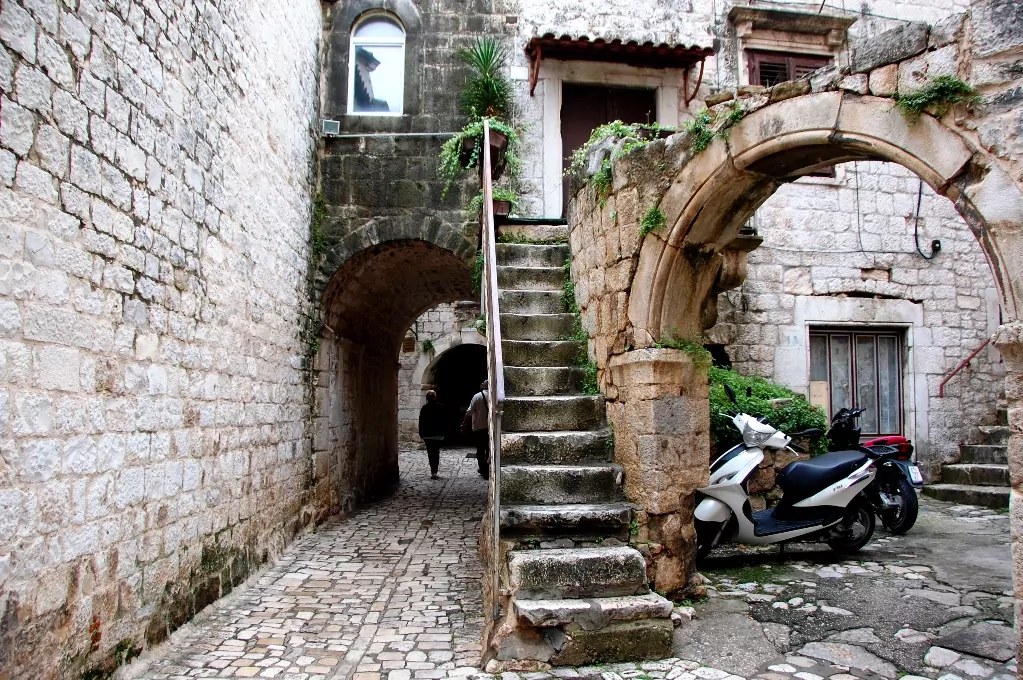
1. Fascinated by the Unesco World Heritage Site in Trogir
In 1997, the Old Town of Trogir was listed as a UNESCO World Heritage Site for its historic architecture. The old town includes several churches and buildings in Roman, Renaissance and Baroque architectural styles. The medieval city that we liked immediately with the old part surrounded by a 15th century city wall and a 14th century castle.

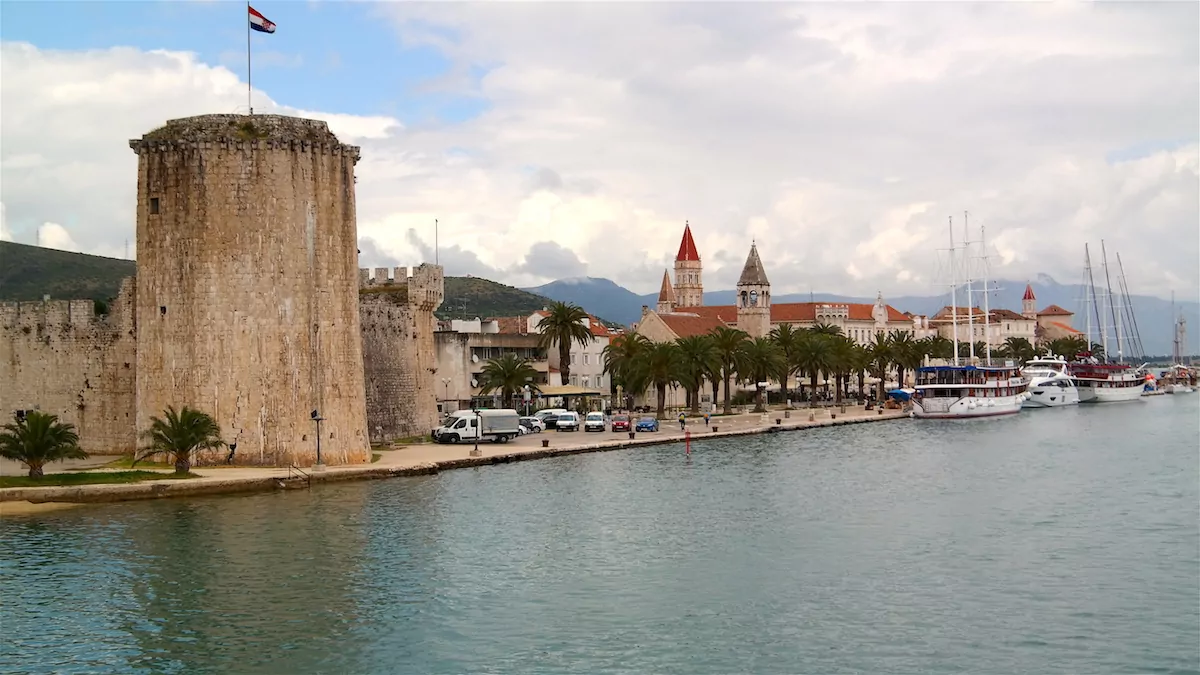
2. Admire the central square and alleys
In Trogir's Old Town, you can visit the central square, Trg Ivana Pavla II, where the town hall is located, and stroll through the charming cobbled alleys. Here, tables are set at an angle and potted plants hang wildly from the balconies.
Of course, there are also plenty of small shops where you can buy tunics, jewellery and genuine sponges.
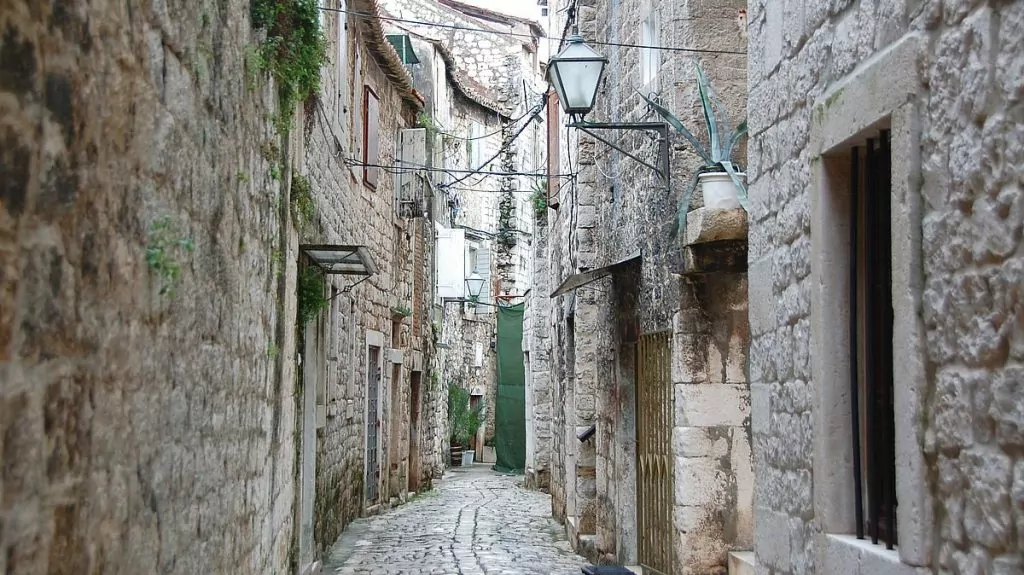
3. See the Cathedral of St Lawrence
Walking around the Old Town of Trogir, you can't miss the 14th century Cathedral of St Lawrence. Here you can see the amazing gateway, made by Master Radovan. You can also climb to the top of the tower to get a panoramic view of the city or take a selfie. In the same building with an external exit, the Ivan-Orsini Chapel is also worth a visit.
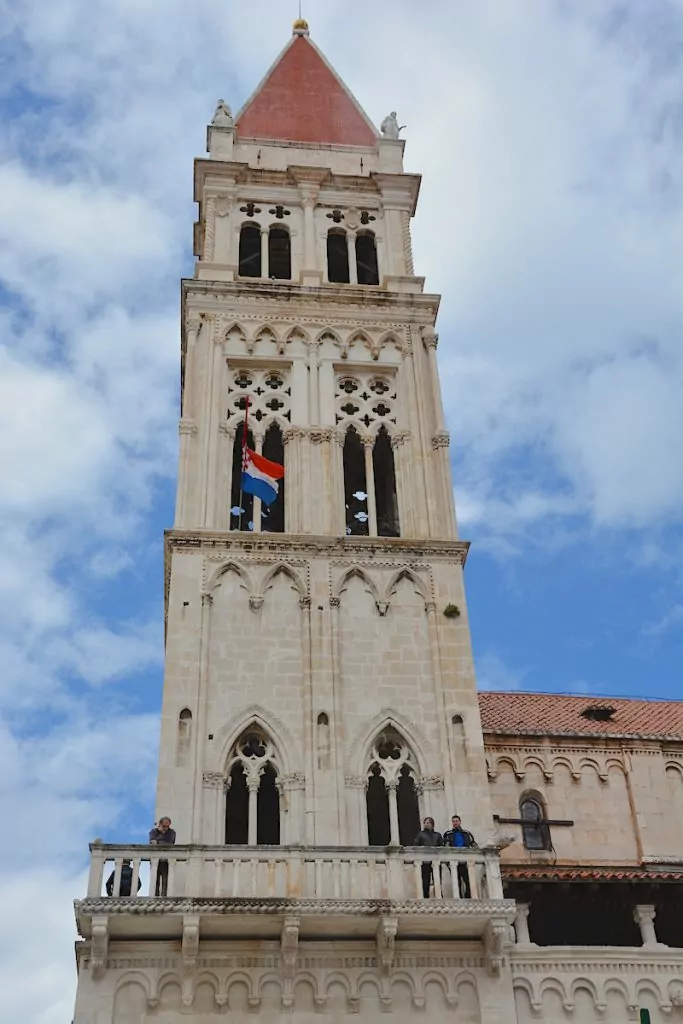
4. Travelling back in time in the Kamerlengo Fortress
Another major attraction is the 15th century Kamerlengo Fortress. For a small fee, you can walk around the walls of the fortress and climb the tower. In summer, it is not uncommon for concerts and other events to be organised here.
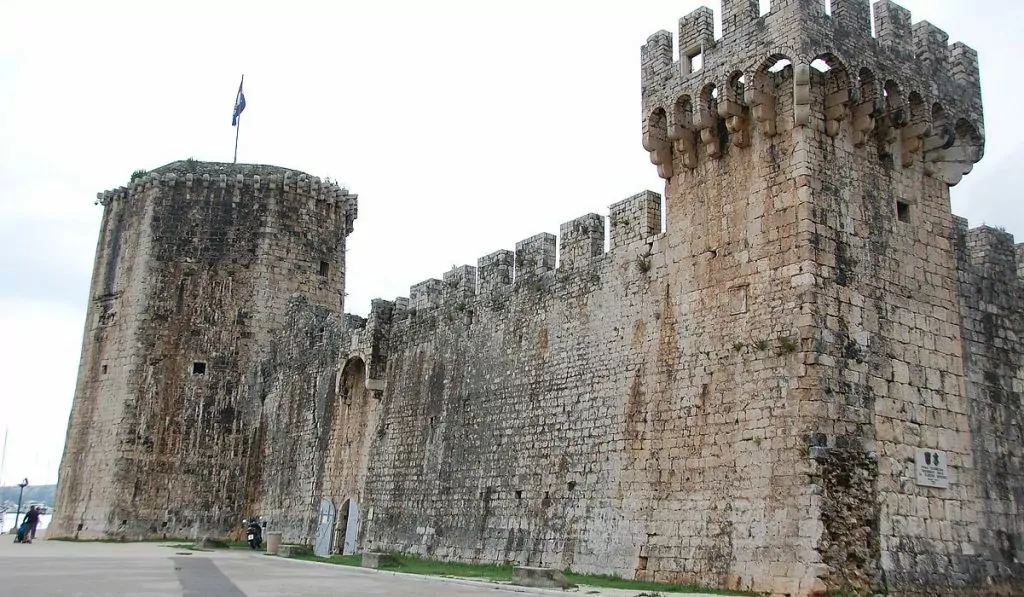
5. Inspired by the monastery of St Dominic
The Abbey of St Dominic was built in the 13th century and adds to the medieval atmosphere of the town. Located on the south-west side of the island, near the seafront, the monastery is well worth checking out.
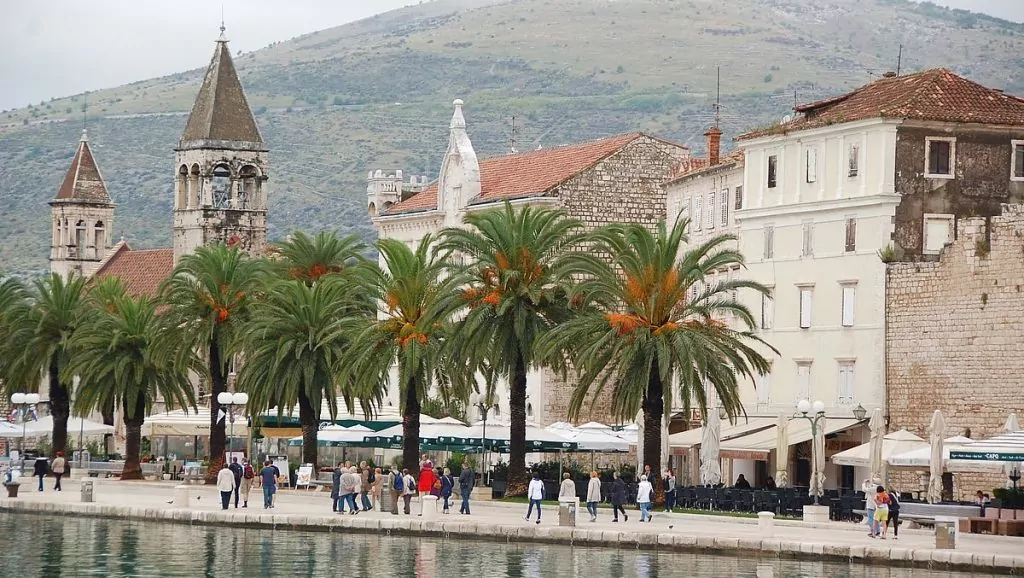
6. Taste the vegetable market
On the mainland, near the bridge to the Old Town, you'll find the Vegetable Market. Here you can browse fruit and vegetables; Croatian olive oil is excellent and other local products such as the local brandy Rakija. Right next door is the fish market, where the city's fishermen offer the catch of the day.
7. Sunbathing and swimming on beaches in Trogir
We were not so interested in swimming now in October, but there are of course bathing places and beaches in Trogir. The most popular beach is Okrug beach on the island of Ciovo, which is a lively beach with several bars and restaurants. On the same island you will find Okrug Gornji, Marina Seget and Slatine beaches. Here are some other beaches in the area:
- Pantan is about 1.5 kilometres east of the Old Town. This is a gravel and sandy beach about 500 metres long, and there is also a bar.
- Kava is about 12 kilometres from the centre of Trogir. There are no restaurants or other services here.
- Medena is about 4 kilometres from the town. This beach is about 3 kilometres long and offers various water sports, among other things.
- Krknjasi is located on the island of Drvenik Veliki.
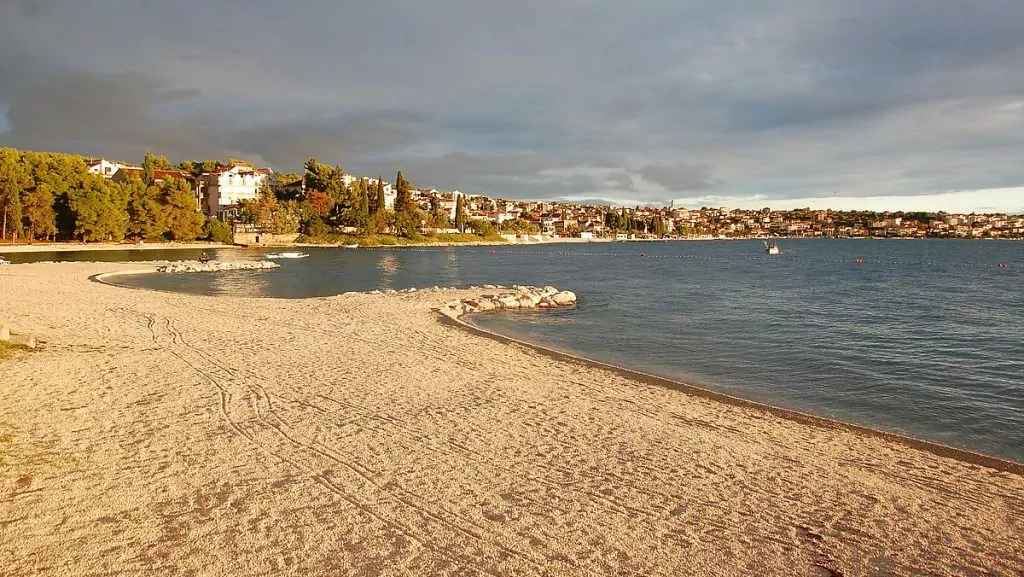
8. Stroll along the seafront
Strolling along the quayside with boating on one side and the old town on the other is idyllic. There are also plenty of nice restaurants in Trogir with cosy outdoor seating along the quay. We checked out a few and saw that the menu seemed to be about the same in several. We chose one, and the food tasted excellent without standing out in any way. Barbecue is common on the menu, and there is also plenty of seafood.
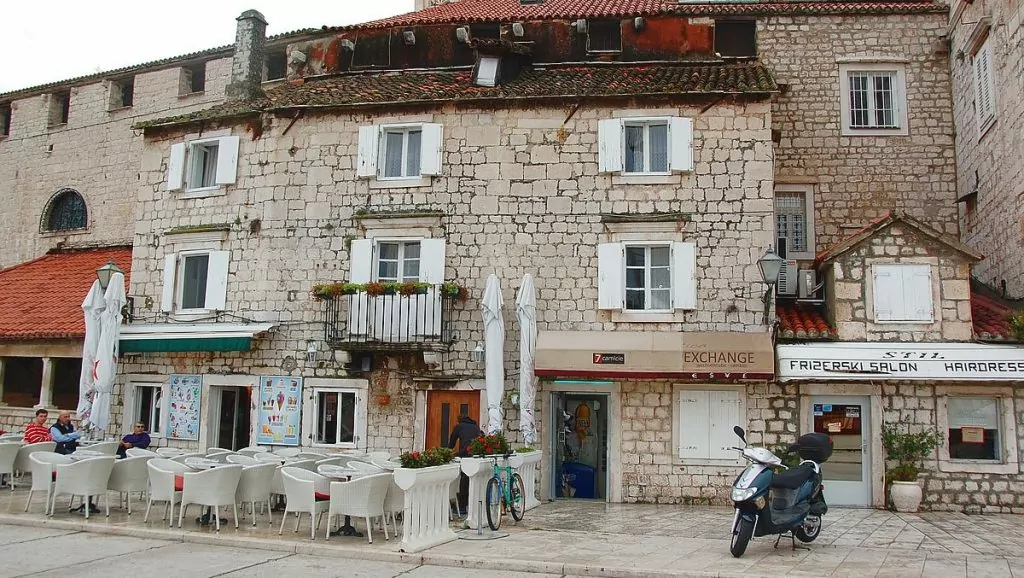
9. Experience more historical sites in Trogir
There are many historic buildings and monuments to experience in the old city centre.
- The Land Gate (North Town Gate) from 1656 in Baroque style, the best preserved of the two in Trogir.
- The Cipiko Palace comes from the noble family of Cipiko and is located opposite St Lawrence Cathedral.
- Vitturi Tower, located along the seafront and part of a tower in the wall.
- The 14th century town hall which was once a palace
- The city hall with the large working clock tower with lots of history.
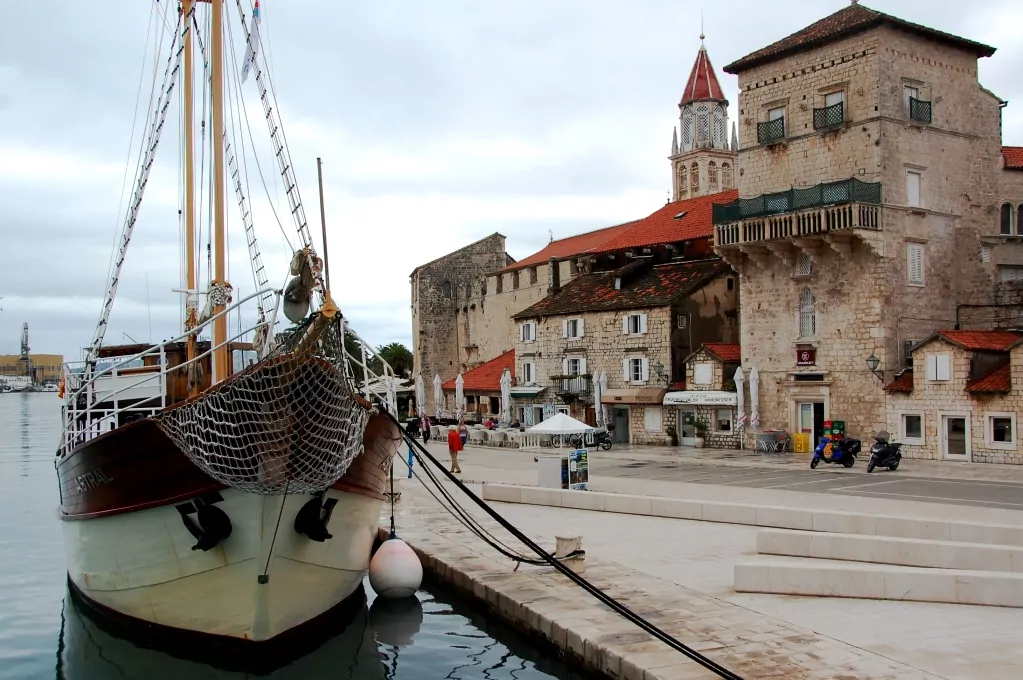
10. Enjoy adventures on the Adriatic Sea
Around Trogir is the Adriatic Sea with lots of wonderful adventures on the sea and the beautiful islands. Pick up your map with all the information at the Tourist Board in Trogir's central square Ivana Pavla II. Try to get active with...
- A boat trip to the island of Solta, a picturesque island with only 1500 inhabitants.
- A full day to the Blue Lagoon where you can swim and snorkel in the crystal clear waters of the islands of Drvenik and Krknas.
- Jet ski safari in group or alone
- Fishing off Trogir
- Rent a sailing boat
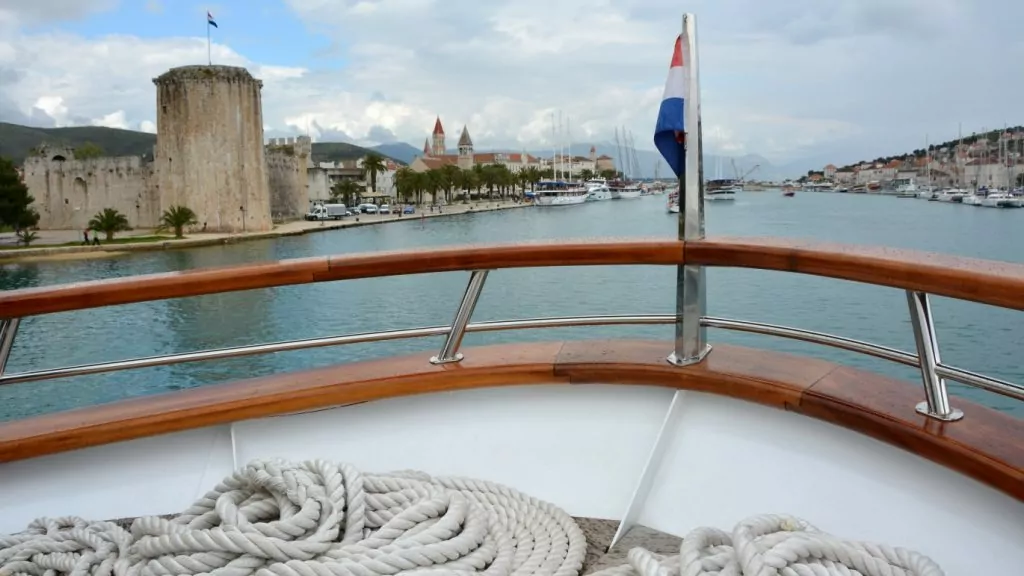
More to do in Trogir
In addition to the sights mentioned above, there are several other great things to do in Trogir. If you want to know even more about the city's history and sights, you can.
- Cookery courses
- wine tastings
- Guided tour with "Emaus Tourist guide Trogir"
- Town museum
- Museum of Sacred art
- Learn how to shoot a bow and arrow with "Bows and arrows".
- Go-karting with "Karting arena Trogir"
- Quad bike with "Quad adventures"
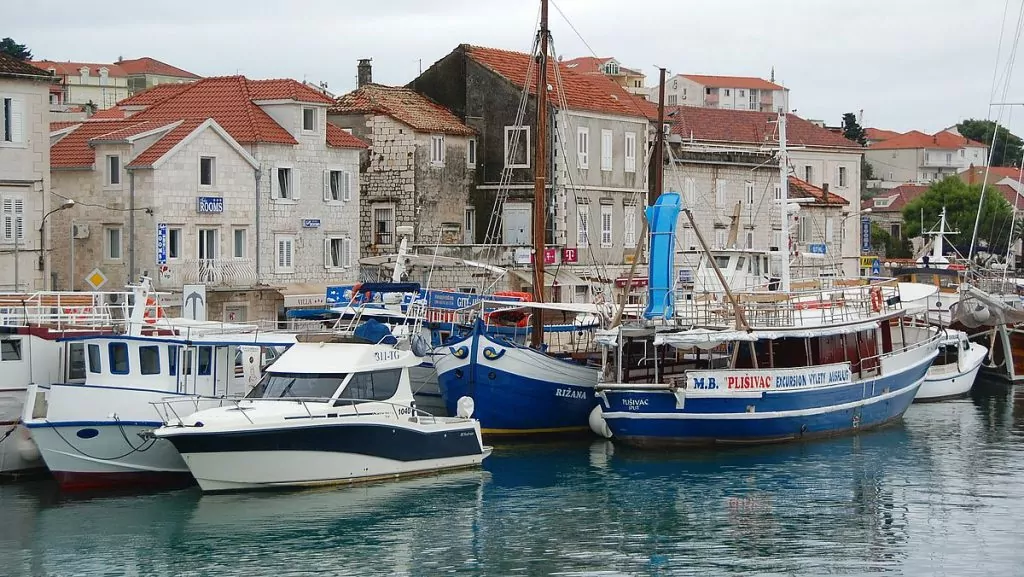
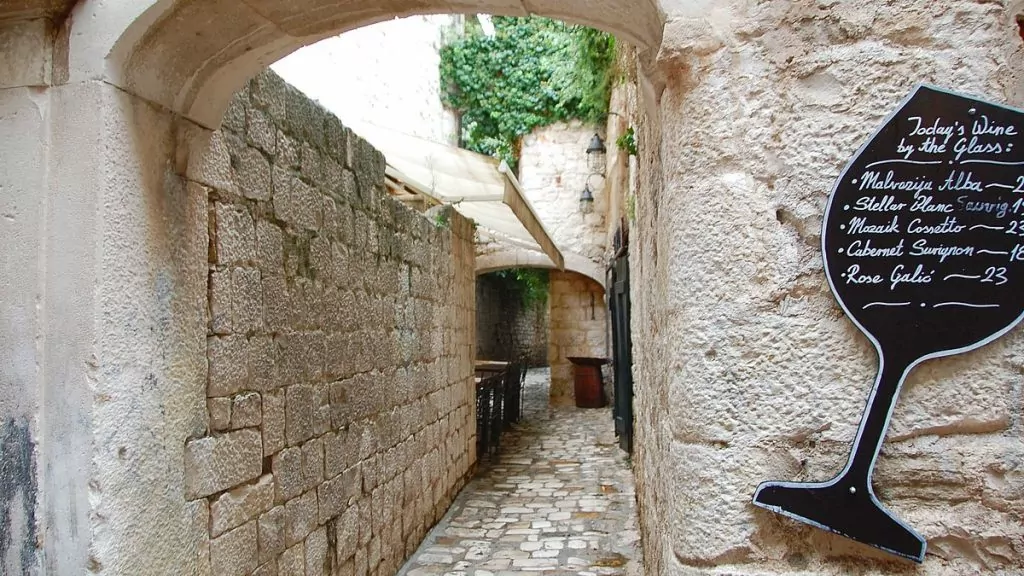
Visiting Trogir in low season
Here in October, the worst tourist season is over and there is no need to crowd, even though an unexpectedly large number of Chinese have found their way here. In summary: Trogir is a little gem in Croatia and we can highly recommend a visit here!
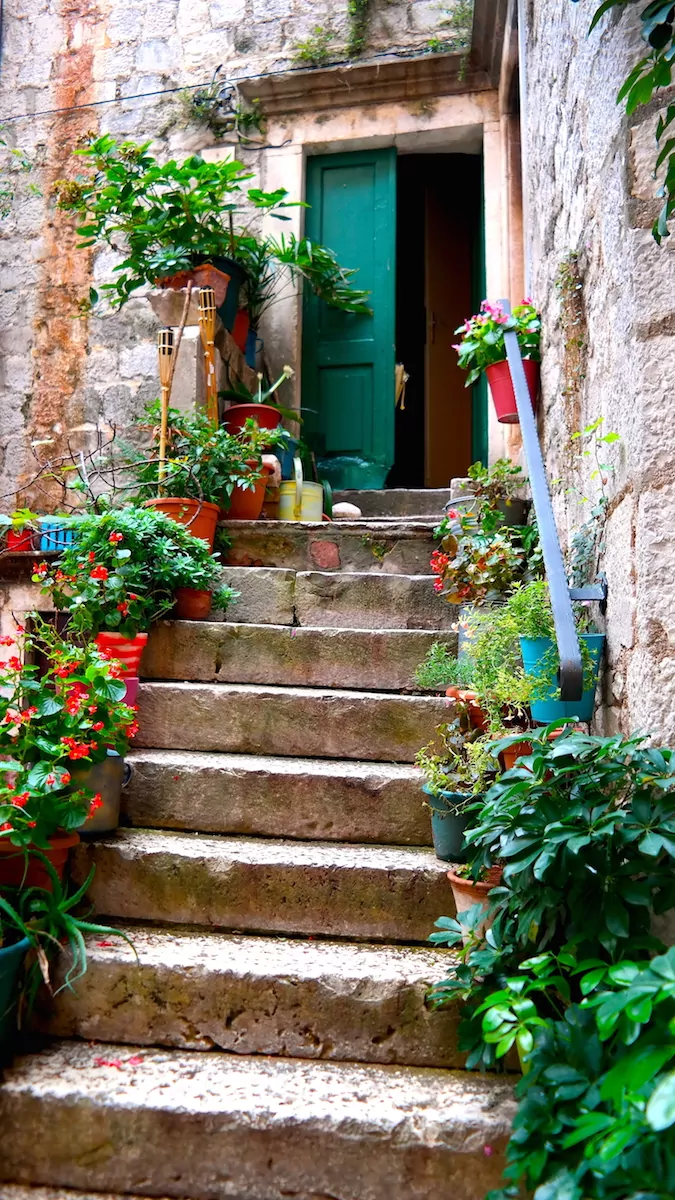
Stay at Camping Rozac
We have parked our motorhome at camping Rozac, which is located on the large island just off the island where the Old Town is located. From here you can walk into town, which takes about 20 minutes. The campsite is full of trees and is located along the coast, with the beautiful green shimmering water just outside.
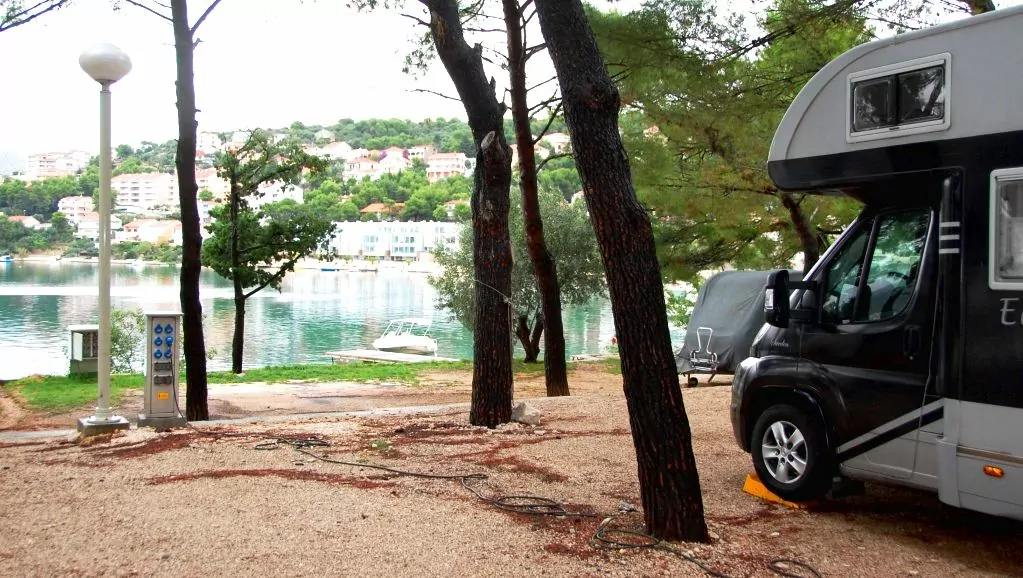
Things to see and do near Trogir
Do you have time and opportunity to explore the area around Trogir? Then there is plenty to choose from. Here are suggestions for some nice and interesting excursions:
- 23 things to do in Split
- Holidays on the island of Brac in Croatia
- Omiš in Croatia - the city of pirates
- Krka National Park in Croatia
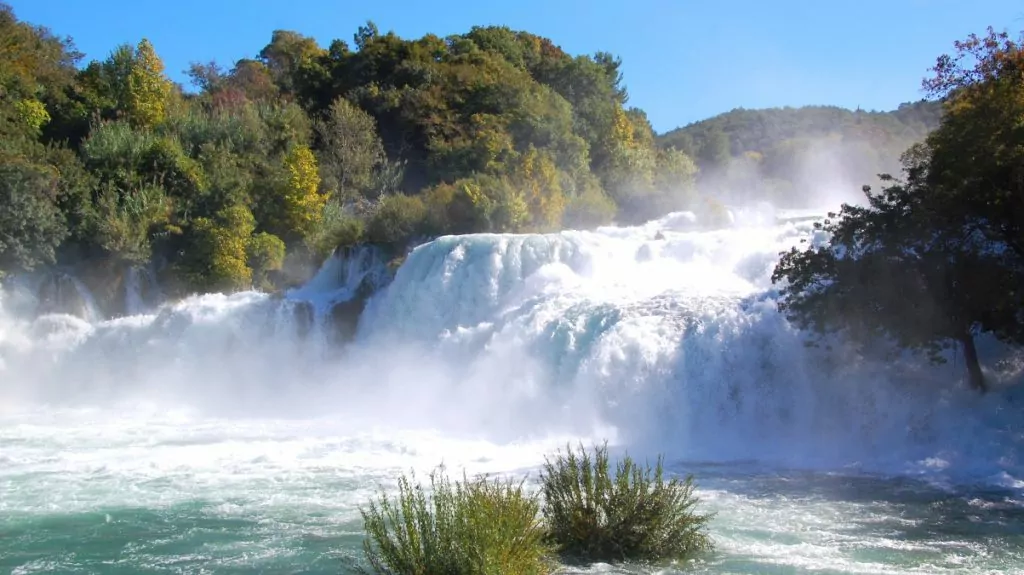
Christmas market in Zagreb - Europe's best Christmas market
Have you ever thought about going to a Christmas market in Zagreb, Croatia? If not,...
The town of Hvar and the island of Hvar in Croatia
The town of Hvar in Croatia is located on the island of Hvar, in the Adriatic Sea. The old town of Hvar is...
Krka National Park in Croatia - 8 musts and facts
Updated in 2023 - Krka National Park in Croatia is a stunning national park with impressive waterfalls,...
Rovinj in Croatia - lovely medieval town in Istria
Rovinj in Croatia is a lovely medieval town on the Adriatic Sea in Istria. Here you can stroll...
Hiring a motorhome in Croatia - our experience of a 'bumpy ride'
We have just returned from a week-long trip around Istria in Croatia, where we...
Good campsite at Pula in Istria
Now we have found a good campsite near Pula on Istria, after travelling...
Unesco World Heritage in Croatia - 10 natural and cultural heritage sites
Have you seen any of the Unesco World Heritage Sites in Croatia? There are currently 10 of them, and...
The world's smallest city - Hum in Croatia
Hum in Croatia is the smallest city in the world. We went to the small mountain village located on...
Zagreb in Croatia - sights and 12 things to do
Zagreb in Croatia is a cosy and interesting capital city. Here you can experience everything from ...
Luxury Hotel Park in Split - for the Golden Pen Award
The luxurious Hotel Park in Split is located in central Dalmatia in Croatia on the Adriatic Sea. The hotel is located...
Paklenica National Park in Croatia
Paklenica National Park in Croatia is a dramatic park in a large canyon, listed as a UNESCO World Heritage Site...
New pitch in Croatia - and some camping tips
Most people who have been to Croatia will agree that it is a fantastic country with...
Supetar on Brac in Croatia - an idyllic tourist resort
Supetar on Brac is the largest town on the island and you can get here by ferry....
Fažana - a gem on the west coast of Istria
Located on the west coast of Istria, the small town of Fažana in Croatia is a little gem. Here...
Weekend in Split - cosy even in winter
A weekend in Split, Croatia - why not? We travelled to Split for a few days over...
National parks in Croatia - 8 lovely oases
National parks in Croatia! If there's one place in the world where we've seen beautiful national parks, it's...
Holidays on Brac in Croatia - tips for the island of Brac
Updated 2023 - Looking for a holiday on Brac in Croatia? The island of Brac is a...
Plitvice Lakes - experience the Plitvice National Park
Updated 2023 - Plitvice Lakes in Croatia is a national park and natural area with dramatic waterfalls, beautiful...
Excursions from Split: Solta and Trogir
Solta - a beautiful island! Based in Split, Croatia, there are many opportunities for...
Labin in Croatia - on a motorhome trip around Istria
Labin in Croatia is a charming town on the eastern side of Istria. We started with an early...
A huge campsite in Pula: camping Brioni
Right now we are standing, almost alone, on a huge campsite in Pula. Most campsites in...
Sinj in Croatia - among knights and Unesco heritage sites
Sinj is a small town in Dalmatia, inland Croatia. By making just a short...
Omiš in Croatia - City of Pirates
The pirate town of Omiš in Croatia is located on the Adriatic Sea in Dalmatia, just southeast of Split. In the 13th...
By motorhome in Opatija, Croatia
We have now spent a few days in Opatija, Croatia. This is a charming little town with...
Experience Croatia by car
If you want to experience Croatia, the best way to do so is by car. If you only fly...
Are Europe's clearest waters in Croatia?
The water in Croatia is crystal clear. Every time we come down to the beach we look and point....
Istria in Croatia - 9 wonderful places to visit
Istria in Croatia offers charming cobbled streets, historic towns and a crystal clear sea. We've visited...
Shopping in supermarkets in Croatia
Grocery shopping abroad is always fun! What is it like to shop in supermarkets...
Zaton Holiday Resort in Croatia - with extra everything
Zaton Holiday Resort is a holiday resort and a campsite in Nin, Croatia with extra everything....
Stari Grad on the island of Hvar - Croatia's oldest town
Croatia's oldest town Stari Grad is located on the island of Hvar, in a small bay on the north-west...
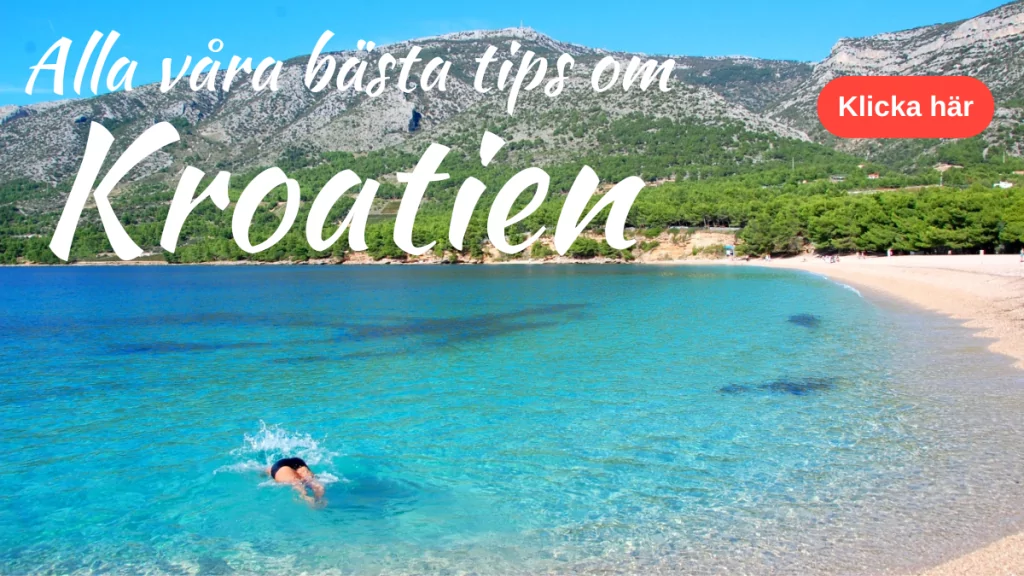
Facts about Trogir in Croatia
- Country: Croatia
- Landscape: Dalmatia
- County: Split-Dalmatia County
- Population: 13 000 (2011)
- Name: Trogir (Traù in Italian and Trau in German)
- Industries: Shipyards and tourism
- Climate: Mediterranean climate with 2,700 hours of sunshine per year.
- Temperature: The average temperature for the whole year is above 15 degrees and in summer you can expect temperatures around or above 30 degrees.
- Water temperature: The bathing temperature in summer is just over 25 degrees.
Things to see and do in Trogir
- Attractions: Trg Ivana Pavla II, Town Hall, Loggia Doorway, Land Gate (North Gate), St Lawrence Cathedral, Kamerlengo Fortress, Marmont's Monument, St Mark's Fortress, St Dominic's Monastery, St Michael's Bell Tower, St Sebastian, Ivan Orsini Chapel, St Peter's Church, Cipico Palace, Vitturi Tower and the Waterfront Promenade.
- Activities: Sun and sea, boat trips, sailboat hire, canoe hire, guided city walks, cookery classes and wine tasting.
History of Trogir
- Early historyArchaeological findings show that the island where the Old Town now stands was probably already inhabited in the Bronze and Iron Ages.
- The founding of the city: Trogir was founded as a Greek colony in the late 200s or early 100s BC. The ancient Greeks called the settlement Tragoúrion.
- The Roman Empire: The expansion of the Roman Empire led to the Romanisation of the settlement even before Christ. The Roman name for the settlement was Tragurium. The town developed into an important harbour town in the Roman province of Dalmatia. Over time, Western Roman civilisation declined and the area suffered repeated barbarian attacks. Trogir retained some autonomy, however, through political contacts with the Byzantine Empire.
- Migration period: During the migration period in the 6th century, Slavs (Croats) gradually moved into the area. The Croats established a principality in the 7th century.
- The Middle Ages: During the Middle Ages, Trogir maintained some independence by paying tribute to various ruling rulers. The city was mainly controlled by Hungary, but also by the Byzantine Empire and Venice.
- 15th century: Venice took over and ruled until 1797, during which time the city prospered economically and culturally.
- 19th and 20th century: With the exception of a brief French occupation, the city (and all of Dalmatia) fell to the Austrians, who retained power until 1918. Trogir then merged into the state that eventually became known as Yugoslavia. During World War II, Trogir was occupied by Fascist Italy, and after the Italian surrender in 1943, Trogir was taken by German troops. This in turn led to the aerial bombing of the city by the Allies in 1944. Later that year, Trogir was incorporated into the re-established Yugoslavia. Since 1991, Trogir has been part of independent Croatia.
Accommodation in Trogir in Croatia
- Hotel: Trogir has a relatively large number of hotels and hostels. There is accommodation both in the Old Town and on the mainland, but most accommodation is on the island of Ciovo. Check Booking.com or Hotels.com, for example. During the high season, it is advisable to book well in advance.
- Apartments: Many residents rent out rooms and apartments privately. During the summer, it is advisable to book these in good time.
- Camping: Camp Rozac is located on the larger island off the island where the Old Town is located. There are both cottages and pitches for camping vehicles. The address is Šetalište Stjepana Radića 56, HR-21225 Okrug Gornji. There are also other campsites in the area: Labadusa (Ciovo Island), Seget (2 kilometres from Trogir) and Vranjica Belvedere (5 kilometres from Trogir).
Travelling to Trogir in Croatia
- Flight: You can fly to Split, and in high season SAS flies directly from Stockholm Arlanda to Split. From Split to Trogir it takes about 50 minutes by car, and there are also buses.
- Car: It takes about 15-16 hours to drive to Trogir in Croatia from Rostock in Germany (1690 kilometres), counting pure driving time. You can drive through Germany, Austria and Slovenia to get to Croatia.
- Bus: There are local buses from, for example, Split. The buses run regularly and are not very expensive. There are also private minibuses.


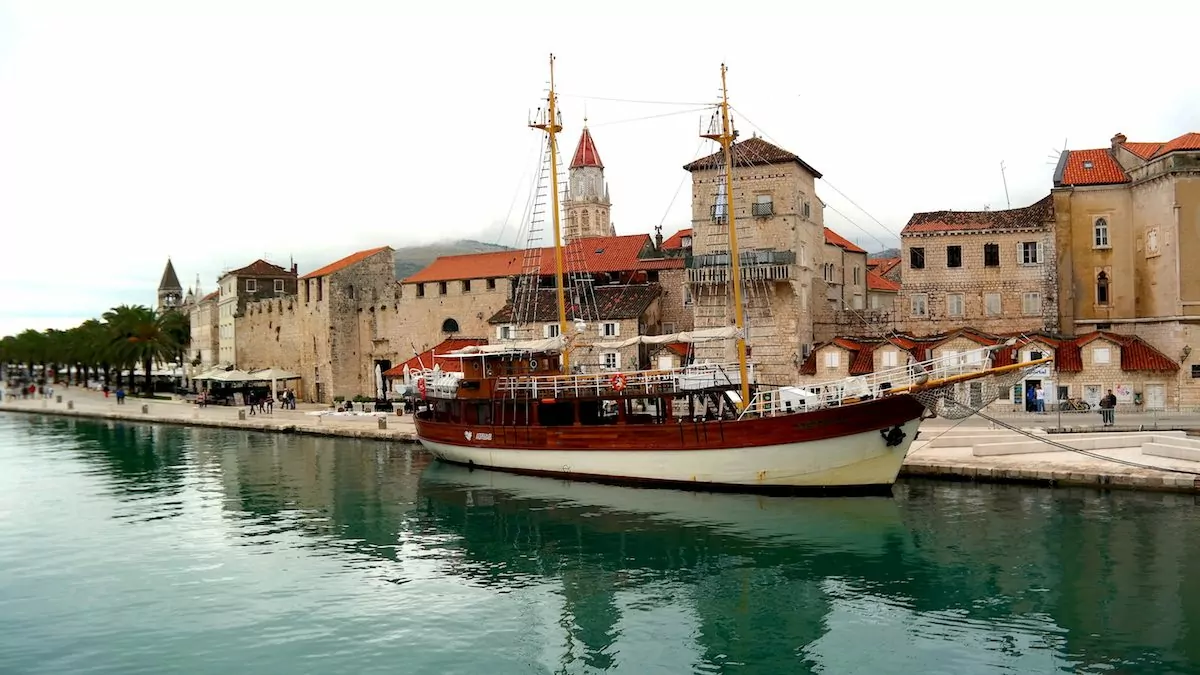







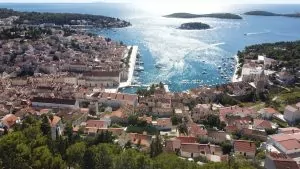
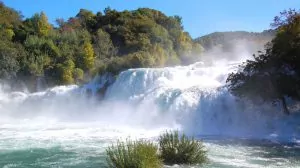
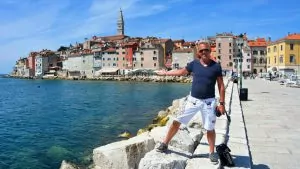
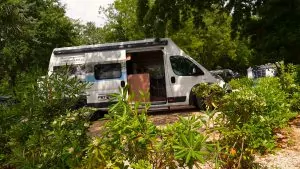
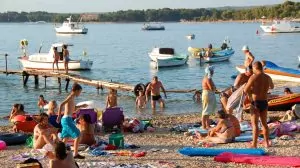
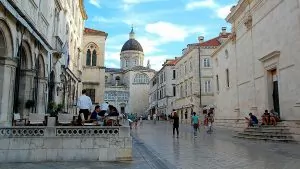
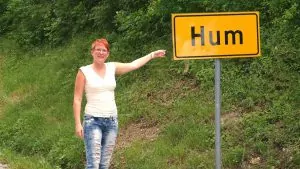
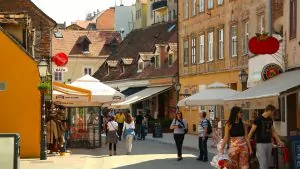
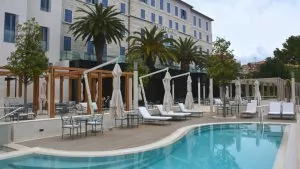
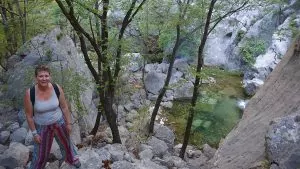
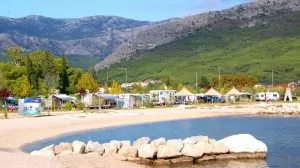
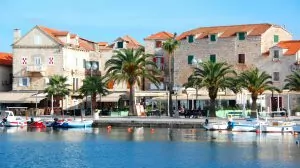
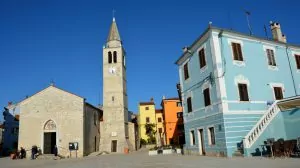
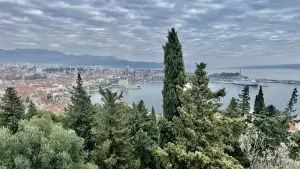
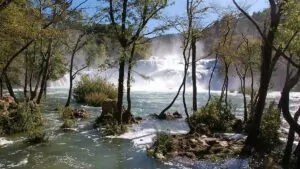
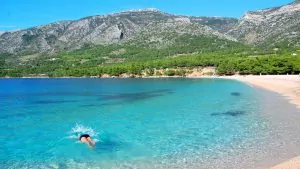
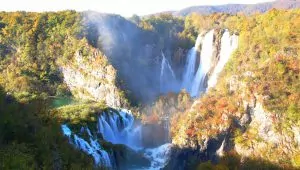
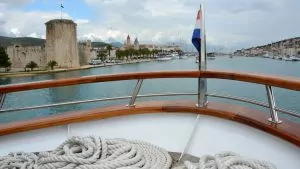
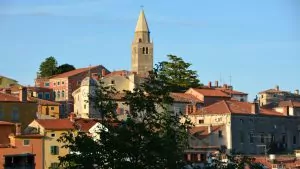
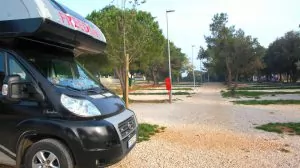
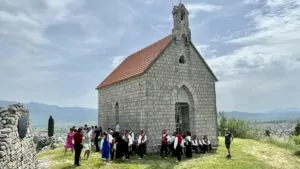
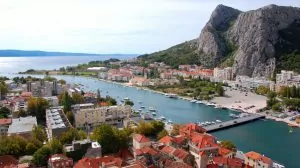
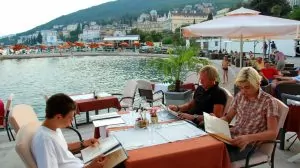
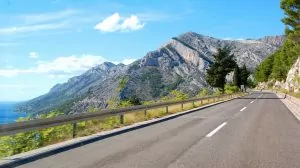
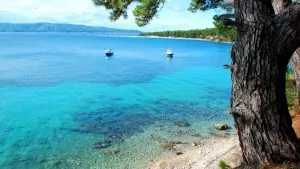
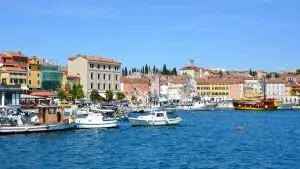

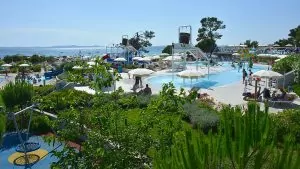
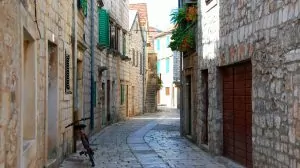
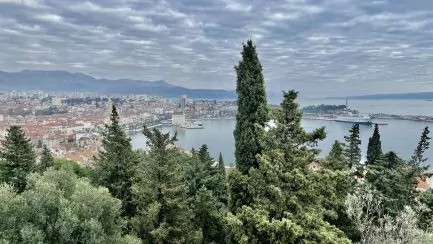
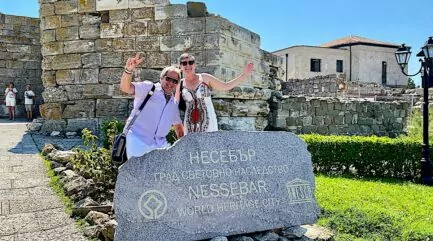
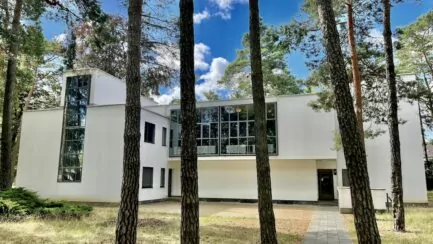
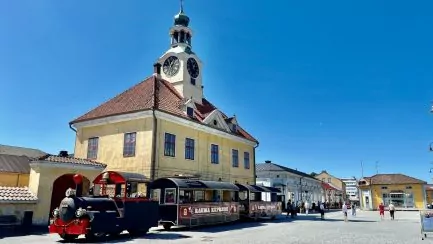
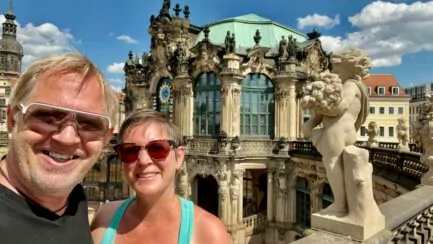



Ditte says:
What a lovely little town. And now that the tourists have left, I can imagine that it is even nicer.
And as for the Chinese, they know all the hot spots....
Lovely pictures from a city that beckons. But in low season, I think.
11 October 2015 - 16:08
Mr Steve says:
What a wonderful country that is "full of small idyllic towns that are easy to fall in love with".
11 October 2015 - 17:00
Lennart says:
Croatia offers many beautiful places!
One more beautiful than the other! Simply a fantastic country!
Keep up the good work
11 October 2015 - 17:24
BP says:
I can see why you fell in love with it. What a gem! When I saw the scooters in picture 2, I thought that it is probably not a big idea to own a car in that city;-) Then I liked very much the city wall that kind of goes "through" the houses.
When I see such old buildings, I sometimes wonder if what is being built today will still be there in 500-600 years. I don't think so...
11 October 2015 - 18:02
admin says:
Ditte, sure, it's almost even more cosy to visit places like this when the high season is over. And yes, the Chinese seem to have a nose for the good stuff 😉.
Steve, well it's no wonder that many people are fond of Croatia!
Lennart, can only agree!
BP, inside the city walls, it's probably only scooters and bikes that apply! But there are car roads outside the wall and there we could also drive 😉 Interesting thought as you say, wondering what is left in the future of what we build....
11 October 2015 - 18:11
Matts Torebring says:
We can only agree, Trogir is really cosy. Be well
11 October 2015 - 19:34
Linnea Edmark says:
As I have probably written in several comments, I have a weakness for alleys and villages, cities and towns with a well-preserved city centre and exciting history. I would probably like Trogir 🙂
Greetings Linnea
11 October 2015 - 22:10
Mr Lars Permelin says:
I'm wondering what it's like to live in a medieval town all the time, at least in the pictures it looks both special and cosy.
11 October 2015 - 22:59
admin says:
Matts, it's hard not to love Trogir! 🙂
Linnea, you would surely like Trogir! 🙂
Lars, yes, one can wonder!? It is probably cosy, but it must be a bit special to always (at least in high season) be surrounded by photographing tourists... 😉.
12 October 2015 - 7:30
Role o Carina says:
Can only agree, Wonderfully beautiful 🙂 🙂
Have fun and enjoy.........:-)
12 October 2015 - 10:54
Ama de casa says:
Oh so nice! And I just love when you find campsites within walking distance to the villages/towns. Especially when it's such a wonderful place 🙂 .
12 October 2015 - 11:11
Gunilla Stand says:
Trogir is our favourite city too! Really longing to go back when I see your pictures!!!
Take care and enjoy! ☀️☀️☀️
12 October 2015 - 14:15
Carina says:
Sounds wonderful. Might be the next destination
12 October 2015 - 16:44
admin says:
Rolle and Carina, yes and it's important to enjoy as long as it's reasonably warm too, soon it will be colder here too 😉.
Ama de casa, we agree. We don't like being "isolated" in a campsite, we want to be able to move around!
Nilla, funny that you also like Trogir. Really a super cosy city! 🙂
Carina, we can highly recommend Trogir. There are also many nice places to visit in the neighbourhood, such as Split and Krka National Park.
12 October 2015 - 17:02